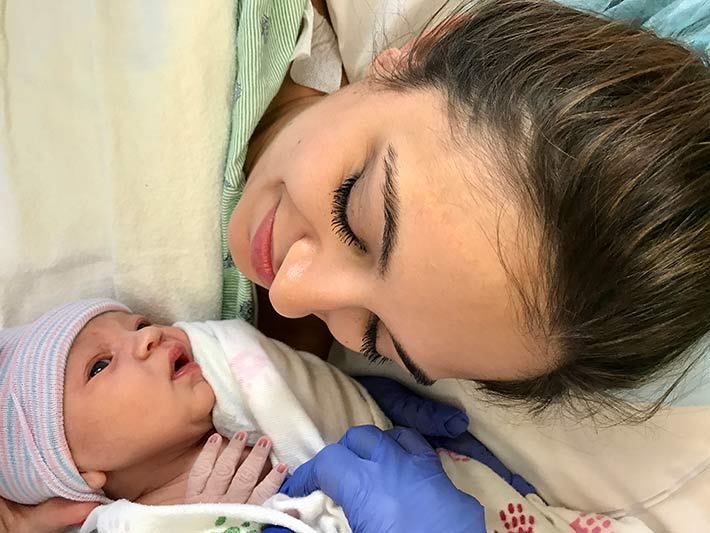
A Blood Donation Saved This Mom’s Life
Because of selfless blood donors, this mom was given a second chance at life.
May 08, 2024
- Copy Link
- Share on X
- Share on Facebook
- Share on Linkedin
Blood donation is needed year-round to help people with cancer, during surgeries, and even mothers during childbirth — in fact, an estimated 3% of women who give birth need a life-saving blood transfusion following delivery. Based on the most recent birth data, that’s more than 100,000 moms every year. Each blood donation can save up to three lives.
Here's the story of one mother whose life was saved by a blood transfusion, in her own words:
My name is Ellen. I’m 34 and I live in Illinois.
In the days after my son was born, I had a singular demand of the universe: Stop the bleeding.
I went into the hospital on a Sunday night.
It took 35 minutes to get there, five hours before I relented for the epidural and almost 18 hours before I started to push.
Quickly, my fever spiked. My nurse rushed to get a doctor. My baby’s heart rate plummeted.
"Please sign here."
Nurses whisked me away for a C-section at 4:24 p.m. The drugs, and exhaustion, pulled me under. Nine minutes later, my son Blake was born. Seven pounds, 8 ounces, 22 inches long with a head of dark hair and gray eyes. Healthy. Perfect.
In the rush, a uterine artery had been cut during surgery.
I was losing blood. A lot of blood.
I felt awful in the recovery room and my vitals reflected as much. I was in pain — too much pain — even for someone who’d just been split open and sewn back together. An ultrasound was inconclusive. Then a CAT scan showed blood pooling behind my liver and kidneys. I needed to go back to the OR.
Before I went under, the thought crossed my mind: I might never wake up.
I couldn’t even remember the details of my son’s face.
The surgery took a long time. More and more family members showed up at the hospital, congregating in the lobby. My husband lost it in my father’s arms.
Vascular surgeons had been called in to consult. They made a temporary fix to drain out the blood that was pooling.
When they finished, it was Tuesday.
I received the first of what became nine life-saving units of blood before a surgeon walked into my ICU hospital room and gave me a stark option: Get a hysterectomy, or undergo a delicate surgery to find the bleed (with a tiny camera) with the hopes of repairing it. No guarantees.
I chose the latter.
I was awake for the surgery and watched on a large television screen the moment the surgeon found my bleed. Tears of joy. My miracle.
I received still more blood after this surgery. It took days for my hemoglobin levels to normalize. I got to see my son for what felt like the first time a few days after he was born and count his fingers and toes, to hold his perfect little body on my chest.

Modern medicine saved my life.
So did the people who chose to give blood.
They gave me these years I’ve had with — now — all three of my boys.
Each unit represents a life like mine — a wife, a mother, a daughter — someone who just wants to spend a little more time with the people they love.
To think my story is just one of 100,000 annually is mind-blowing. Blood donation matters. It profoundly mattered to my life, to my son's life, to my family. Thank you to the donors — past, present and future. You never know whose life you’re going to save.

Learn more on blood donation and where to sign up at bethe1donor.com.
Ellen Wichman is a member of Abbott’s Public Affairs team.
This story was originally published on June 14, 2021. It was updated on May 8, 2024.
For the latest on Abbott’s life-changing technology, get updates directly in your inbox.